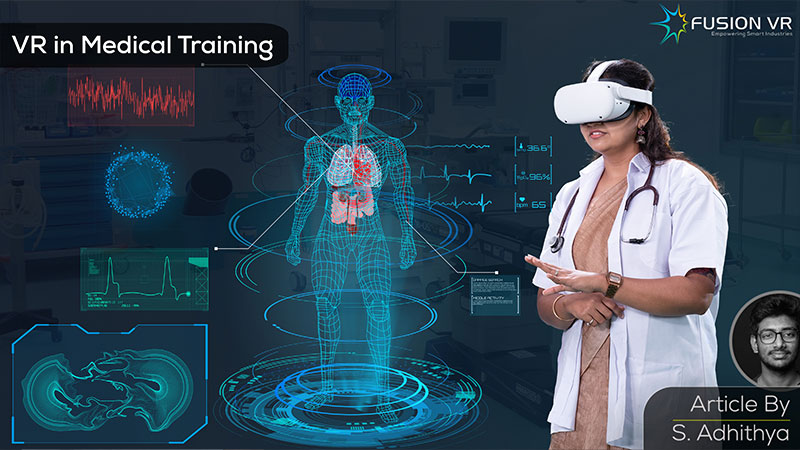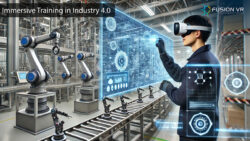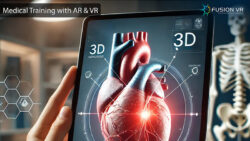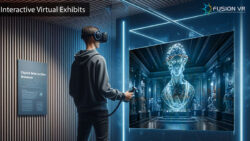Medicine is one of the most vital fields for the survival of humanity. By integrating modern, sophisticated technologies with the healthcare industry, it is not only possible to save more lives but also prolong them. For many years Virtual Reality has been seen as a key technology for the gaming industry, but these days it is making its impact in every sector, from engineering to healthcare.
Due to the lack of resources and the impact of COVID-19, many educational institutions and hospitals are unable to provide full-fledged practical training to the students, which ultimately leads to a lack of knowledge and skills. It’s a serious situation which has a significant impact on the healthcare situation in any nation. This is where Virtual Reality comes to the rescue.
Virtual reality in medical education improves the precision and effectiveness of medical training. It enables the user to experience situations in the virtual world that they would never be able to experience in the real world due to physical limitations.
When compared to the cost of medical equipment and machinery, Virtual Reality headsets are very much affordable.
Moreover, virtual reality can provide a view of the anatomy of the human body and can inspect the 3D models of each organ individually. It allows the students to learn how the various organs work and how they are interconnected throughout the body.
Applications of Virtual Reality in Healthcare Training
Virtual Reality solutions can be designed to generate multiple complex cases and guide the students to recognise and handle those situations effectively. In the real world, it would take many years to get expert-level experience. Still, with these generated complex scenarios, the students can learn the fundamentals many times faster and can gain expert-level of experience in a shorter span of time.
It is quite risky to operate on a real person for training purposes, and every minute matters when surgery is being done, but in Virtual Reality, the students are free of time constraints, and failures are very much tolerable. Each student will be guided with step-by-step procedures, and VR surgical training provides a realistic experience with no risk to lives. Virtual Reality can also be used to evaluate themselves with a score at the end of each training and understand their true potential.
Quite often, a lot of preparation is required for doctors to operate on patients with complex disorders and diseases, and the doctors may not be fully aware of the risks. Still, the same complexity can be simulated inside a virtually recreated human body and can help the surgeons get prepared for the surgery beforehand.
This three-dimensional perspective of the organs in the virtual world lets the surgeons plan accordingly and improves the accuracy of the surgery. Moreover, they can simulate the surgery multiple times before getting their hands on the real patient and have the best possible way to operate on the patient successfully.
Traditionally the doctors can give the patient an idea about their condition via a standard physical model and images but with Virtual Reality, the patient can get a better idea of their own anatomy and a clear sense of their condition.
Virtual Reality can play a big role in cognitive rehabilitation therapy (CRT) by restoring the cognitive function of the brain. Virtual reality can provide more sensory stimulations and real-time feedback when a task is done, which can greatly impact the rate of improvement.
Overall, VR in medical training is an innovative way for the advancement of patient care as well training and sharpen the skills of medical practitioners, thereby adding value to the healthcare industry and the well-being of a nation’s Human Resources





